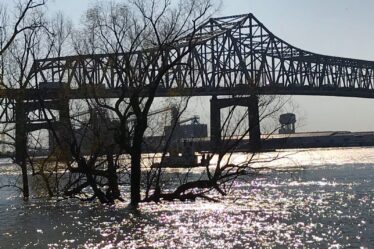
Foster + Partners has unveiled its competition-winning designs for Guangming Hub, a new, lushly landscaped Transport Oriented Development that will serve as a “forest gateway” into Shenzhen, China. Strategically located on the high-speed rail link connecting Hong Kong, Shenzhen and Guangzhou, the contemporary urban center will feature a sustainable mix of transit options from new metro lines to shared surfaces for cyclists and pedestrians. The design takes cues from its green surroundings with a landscaping plan that highlights the site’s natural beauty and encourages visitors and locals to spend time outdoors.
Continue reading below
Our Featured Videos

Designed with an integrated and sustainable transport hub, the Guangming Hub will serve as the central focus of a new masterplan in the region. At the heart of the project is a lush and walkable town center with seamless connections to smart, autonomous transit options, including the existing high-speed rail station that is oriented in the north-south direction and will be topped with a new transport museum and bridge connecting the eastern and western halves of the site. The urban center is also organized by an east-west sunken green spine that cuts through the high-speed rail station at the ground level and connects to a new metro station and intercity link station to the west.
Related: NBBJ to design Tencent’s futuristic “Net City” in Shenzhen


The underground metro and intercity link stations are set beneath a large retail podium with stepped green terraces and green roofs. Inspired by traditional Chinese gateways, the architects will place a series of office towers at cardinal points across the site to mark important entryways to the hub.


The architects used their firm’s specially created software program to optimize the masterplan’s urban massing and circulation flow. The computer-modeled project also takes controlled wind and solar access into account to create enjoyable outdoor spaces. Guangming Hub adheres to Shenzhen’s Sponge City program with its integration of sustainable urban drainage systems such as permeable paving and bio-retention landscaping elements.
Images via Foster + Partners



